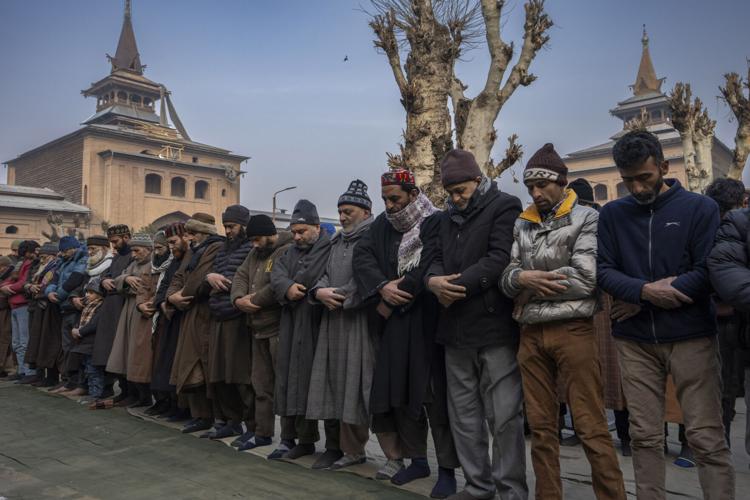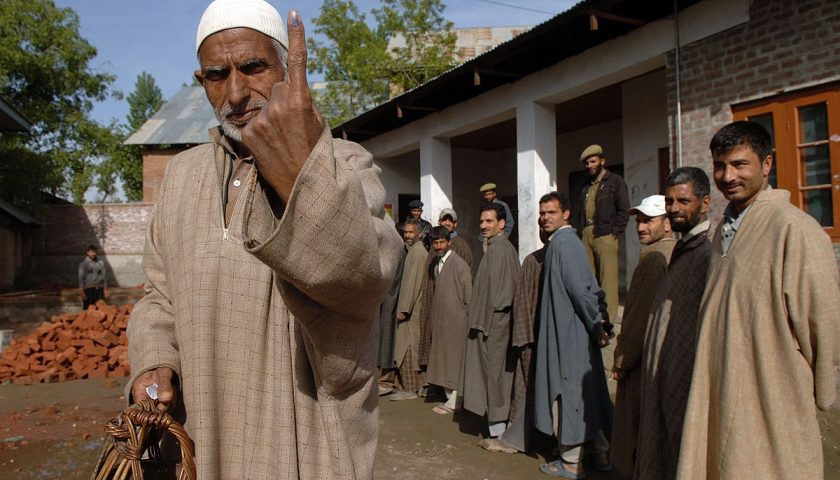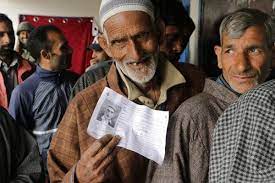Kashmir Gasps for Water: A Valley Parched After 45 Days of Dry Spell
By: Javid Amin
Srinagar: The vibrant tapestry of Kashmir, usually woven with emerald valleys and snow-capped peaks, currently unravels a different picture. A relentless 45-day dry spell has thrust the region into a dire water crisis, its icy grip squeezing the lifeblood from not just its breathtaking landscapes, but also from the livelihoods and well-being of its people.
The Jhelum, Kashmir’s life-giving artery, bleeds at its lowest recorded level in recent memory. Withered to -0.75 feet at Sangam and -0.86 feet at Asham, the once mighty river barely whispers its once roaring song. Where snow-melt and rainfall usually replenish its bosom, an ominous emptiness now lingers.
This isn’t a simple thirst, it’s a multi-pronged attack on the very fabric of Kashmir’s existence. Tourism, usually fueled by winter wonderland charm, stands frozen in its tracks. Ski slopes that should glisten with pristine powder lie barren, the absence of snow echoing the deafening silence of cancelled bookings and lost income.
Farmers, the custodians of Kashmir’s verdant bounty, face a different kind of desolation. Fields that should be bursting with life stand parched and brittle. Irrigation canals, usually brimming with life-giving water, run anemic, their empty veins unable to nourish the thirsty crops. The spectre of withered harvests and dwindling livelihoods looms large, threatening the very essence of Kashmir’s agrarian spirit.
Horticulture, too, feels the dry spell’s sting. Apple orchards, usually laden with blushing fruits, stand forlorn, their delicate blooms shriveled by the unforgiving sun. The fragrant scent of saffron, Kashmir’s precious crown jewel, hangs heavy with uncertainty, its delicate threads struggling to survive amidst the arid air.
Even the lights of Kashmir flicker precariously. Hydropower generation, heavily reliant on the Jhelum’s flow, sputters and coughs. Rolling blackouts become the grim soundtrack of evenings, casting long shadows on homes and hopes alike.
Beyond the economic toll, the human cost of this parched reality is a story etched in worry lines and rationed water droplets. Households juggle dwindling supplies, prioritizing needs over desires. Children forego baths, meals are cooked with measured water, and even the simplest acts of hygiene become daunting tasks.
Experts sound the alarm, the dry spell’s ominous echo reverberating through their warnings. They fear cascading effects – social unrest, ecological imbalance, and a bleak future if the rain gods remain unmoved.
But even in this parched landscape, resilience blooms. Communities come together, sharing precious drops, digging deeper wells, and praying for a reprieve. The indomitable spirit of Kashmir, like a dormant seed buried deep in the earth, awaits the life-giving rain to sprout anew.
The story of Kashmir’s current water crisis is not just about empty rivers and thirsty valleys. It’s a stark reminder of the delicate balance between nature and our lives, a wake-up call to cherish the water we so often take for granted. It’s a plea for collective action, for sustainable practices, and for a future where Kashmir’s valleys once again sing with the music of snowmelt and the laughter of a people quenched by nature’s bounty.






